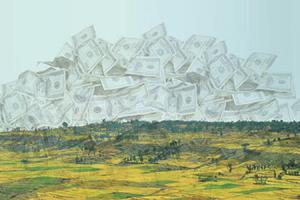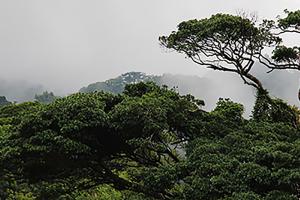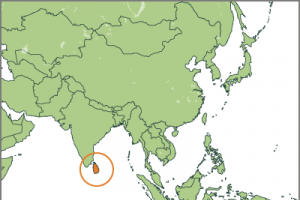The development narrative continues to be revived despite its role in driving the current crisis and the millions of livelihoods it has destroyed through displacement and dispossession.
Sri Lanka
Bulletin articles
17 November 2020
Bulletin articles
23 August 2017
Bulletin articles
12 November 2005
The Wanniyala-Aetto ("forest beings") are the indigenous people of Sri Lanka, gentle hunter-gatherers who have lived in a sustainable relationship to their tropical forest environment for the past eighteen thousand years.
Having survived 2,500 years of settlement of their island, first by Sinhalese and later by Tamil migrants from India, five centuries of Portuguese, Dutch and British colonisation, and two world wars, the Wanniyala-Aetto were evicted from what was left of their ancestral forests by the Government of Sri Lanka.
Bulletin articles
17 October 2003
Multilateral and bilateral agencies --World Bank, Asian Development Bank, International Monetary Fund, USAID and Japan Bank for International Cooperation-- have long provided loans and grants for southern countries, throwing them into a debt trap. Sri Lanka is no exception. To repay its foreign debt, the country has overexploited --with an impact on future generations-- its natural resources, including large scale felling of timber, shrimp farming, cultivation of cash crops, mining and the privatisation of water supplies.
Bulletin articles
14 May 2002
Together with many other organizations, we have once and again insisted on the need to remove tree plantations from the definition of forest, for the simple reason that plantations are not forests. But once and again the forestry establishment has insisted on including them as "planted forests" to adequate the definition to vested interests regardless of its scientific absurdity. The following extracts from a recent article by Ranil Senanayake sheds more light on the issue (the full article is available at: http://www.wrm.org.uy/countries/SriLanka/loans.html ):
Bulletin articles
11 September 2001
When we say that forest loss is increasing across the globe we are not talking only about trees. We are losing not only the physical resources --plants, animals and insects-- but an irretrievable treasure of local knowledge, that in Sri Lanka --as in many other countries-- has been preserved mainly by women. However, women's contribution to forestry is concealed behind their domestic tasks as their forestry-related activities are directly related to home maintenance activities. Forests provide the vital three F's for women: food, fuel and fodder.
Bulletin articles
19 March 2000
The greenery, wet soil and pure water springs brings you the impression of virginity. Darkness in the forest and sounds of birds and insects create a different world. You can experience this in Sinharaja, which is the most famous virgin forest in Sri Lanka. It houses the highest number of species and the highest endemism rates in Sri Lanka. The National Conservation Review of the country's natural forest carried out from 1991 to 1996 recorded 337 species of woody plants in the sample plots that were inventoried. Of these species, 192 (57%) are endemic and 116 (34%) globally threatened.
Bulletin articles
20 December 1999
Forests are trees. Forests are biodiversity. Forests are wildlife. Forests are lands. Moreover, forests are politics. Development is clearing of forests. Conservation means more and more consultancies. Protection means a wider and wider gap between the forest and the communities. Regarding the forest issue, the context in Sri Lanka is not much different from this reality.
Bulletin articles
25 March 1999
Mangroves are wetlands rich in biodiversity that are suffering a severe depredation worldwide. In Sri Lanka mangroves are associated with 22 brackish water bodies, locally known as lagoons. Even if mangroves area in that country is limited to 12,000 hectares, it is of much value since it includes very rare species and types of plant associations in different climatological zones. Fishing in these lagoons is the livelihood for over 120,000 coastal people.



